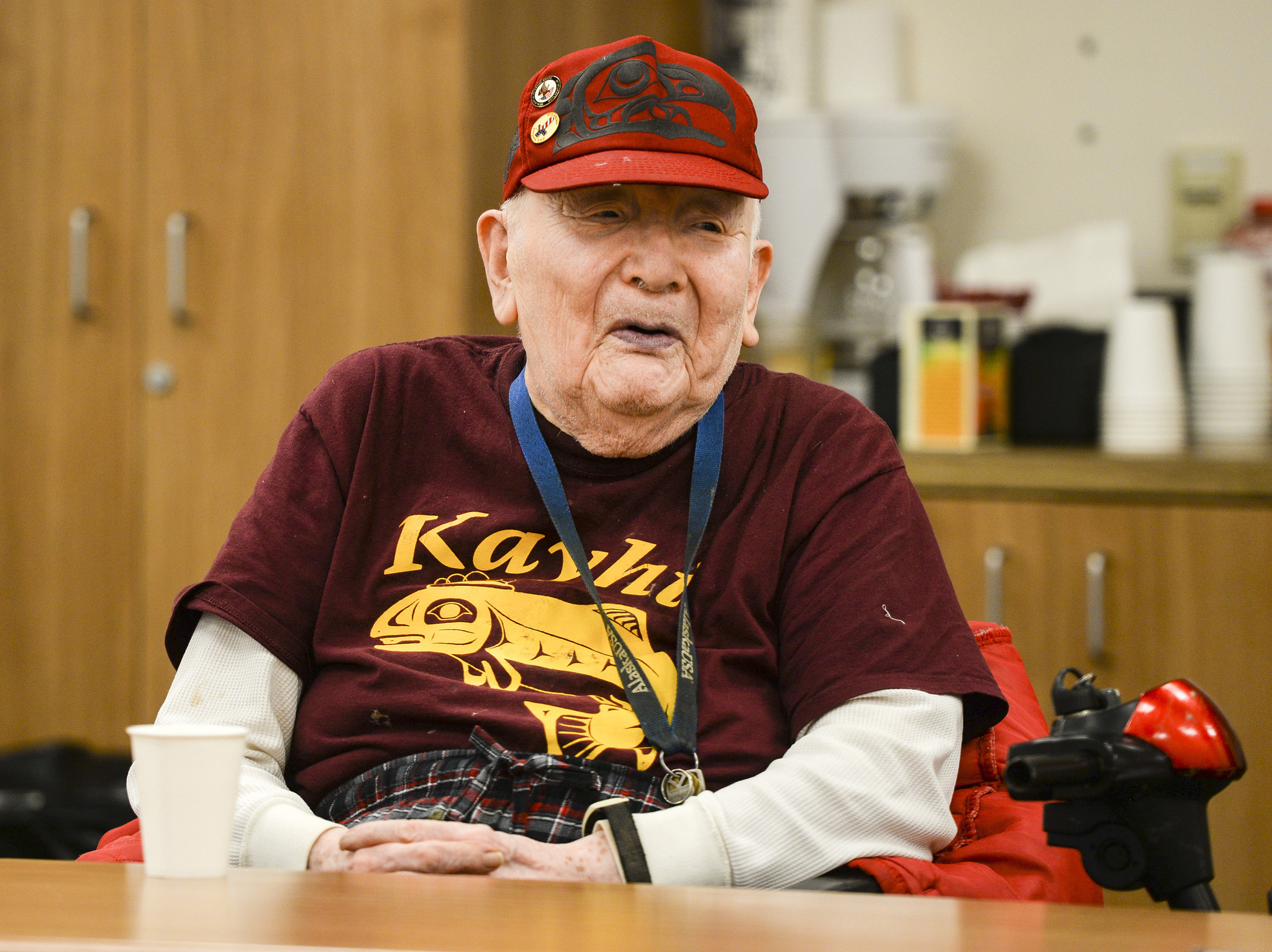KETCHIKAN — If tribal elder John Reese could leave behind just one thing, it would be his beloved Tsimshian language.
Through past U.S. government policy to assimilate Native language and culture to Western ideals, and now, the impeding rush of modern-day society, the Tsimshian language of Sm’algyax and others of Alaska Natives have widely been forgotten, according to Ketchikan Indian Community Language Facilitator Terri Burr.
Case in point: The 94-year-old Reese is the last Ketchikan resident who can correctly and fluently speak Sm’algyax. He, the Ketchikan Indian Community and a pair of language apprentices, however, have been making strides in keeping the language a part of the future.
“It’s a shame that I’m the only one left,” Reese told the Ketchikan Daily News at his Marine View home. “I never thought at any time in my childhood days that the elders would all pass on. I never did. As I grew older, and the people started dying, then I thought, ‘Now who is going to take over the language for them when they die.’ Here I am.”
The most recent effort comes as a series of daytime Sm’algyax classes, which started Wednesday in Ketchikan. Led by Reese and Burr, the class is free, open to all, and lasts through May for beginner and advanced Sm’algyax speakers.
Burr said she has been teaching Sm’algyax at night classes since 2009 and had wondered who might be missing in the effort. Daytime classes are an experiment of sorts to see who else would be available to learn and help revive the language.
“Most of you folks probably understand that the state of our Native languages in Alaska are not healthy at all, and in fact, most of them are in peril of extinction, meaning that the fluent-speaking elders, a lot of them aren’t here anymore, and we only have a few left.” Burr told about 10 students who attended the first class.
“This is the case here in Ketchikan,” she added. “In 1995, I was part of a survey, and we discovered that we had 32 fluent language speakers in Ketchikan. Today, in 2017, we have one left in Ketchikan.”
Burr said the revival effort is showing signs of success. Key to the effort: Family groups who are learning the language tend to bring the classroom home to further practice and hone fluency.
“They practice it in the house,” Burr said. “And it’s always the children — because their memories are always the best — that prompt the parents and grandparents to speak. So when you have language in the home, it’s like it’s coming alive again.”
She said other signs of progress include people throughout town approaching Reese in public and taking up at least basic conversation in Sm’algyax. That hasn’t happened for many years, she said, noting parents have reported their babies’ first words were spoken in the language. It’s a far cry from the cultural assimilation of the past.
“If people feel hard pressed to assimilate and not have any connection with language or culture, of course they’re not going to take a class, practice the words or teach their children about anything language or culture,” Burr said, noting that has been only part of the challenge, the other being the rush of modern living. “We always have to compete with modern day society and that everybody is hard-pressed for time. That’s a challenge.”
Meanwhile, another major sign of change is that parents are teaching their children Sm’algyax as a first language, such as language apprentice Victoria McKoy.
McKoy, a college student and student-body president of the University of Alaska Southeast Ketchikan, has been teaching her 3-year-old son to speak Sm’algyax as his first language, English taking second priority.
An opportunity to learn Sm’algyax with Reese as a mentor is unbeatable, she said.
“Right now, working with John, even though I’ve been taking the language (class) since 2012, every day when I work with him, he’ll give me more and more translations and different ways to say it,” McKoy said after class. “Him being an elder, I can’t get that from anywhere else.”
The volunteer language apprenticeships help with the overall goal to bridge the fluency gap between emerging Sm’algyax speakers and tribal elders. The apprentices eventually will lead the beginning language course, allowing Burr and Reese to launch intermediate and advanced classes.
“The new language, say 20 years in the future, won’t sound like John,” Burr said. “(Sm’algyax) is our second language, and we have English accents. It’ll be interesting. But language has always changed, and that’s OK. At least we’ll still be using it.”

